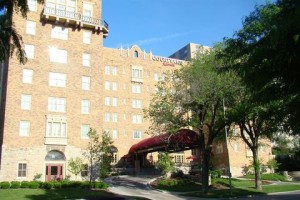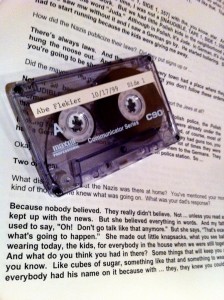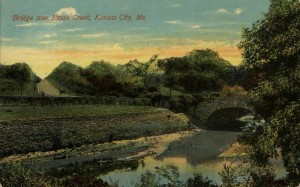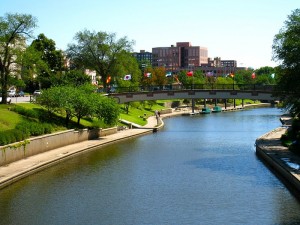By Natalie Walker
The word “history” conjures up ideas of grand battles, massive world wars, famous speeches, and prominent men and women of the past. Less often do people associate history with the houses and buildings they rush past on their morning commute to work. Unless someone is particularly interested in architectural history on the local level, those houses and buildings are not usually associated with the everyday citizens’ idea of “history.” As an intern for the OHP I have begun to appreciate the local Kansas City history and to appreciate the history of places that often seem so “everyday.”
 While writing and researching these site histories I find myself imagining the location of the building and when I see the actual picture, I am amazed that I have driven by it numerous times without realizing its significance. Often times, the site is a mansion that I have seen and wondered about, but never took the time to research. As I delve deeper into Kansas History I am able to make connections to the places with the modern day world. For example, I once stayed at the Courtyard Hotel (Marriott) on the Country Club Plaza and after completing a site history for this hotel, learned that it was originally the historic Park Lane Apartments/Hotel built in the early 1900s as part of the J. C. Nichols vision for the Country Club District. Though it now serves Marriott hotel guests, it was once the location of grand parties associated with the Jazz and Prohibition Era. Learning the history of this location made it that much more interesting and now it is not just a hotel that I stayed at once. In a way, I have begun the transformation from a passive consumer of history to an active consumer.
While writing and researching these site histories I find myself imagining the location of the building and when I see the actual picture, I am amazed that I have driven by it numerous times without realizing its significance. Often times, the site is a mansion that I have seen and wondered about, but never took the time to research. As I delve deeper into Kansas History I am able to make connections to the places with the modern day world. For example, I once stayed at the Courtyard Hotel (Marriott) on the Country Club Plaza and after completing a site history for this hotel, learned that it was originally the historic Park Lane Apartments/Hotel built in the early 1900s as part of the J. C. Nichols vision for the Country Club District. Though it now serves Marriott hotel guests, it was once the location of grand parties associated with the Jazz and Prohibition Era. Learning the history of this location made it that much more interesting and now it is not just a hotel that I stayed at once. In a way, I have begun the transformation from a passive consumer of history to an active consumer.
Although the word history seems to suggest incredibly important events, sometimes it as simple as a hotel that was built by a famous architect and real estate developer. What makes that kind of history important is not just the famous people associated with it or the noteworthy architecture, but the way in which it connects to the everyday citizen. So the next time you drive past a home or building that looks particularly interesting, try researching the place. You might find some history that will connect you to your city, and to that site that has become part of your everyday commute. In any case, you will become an active consumer of the everyday history, often the most rewarding kind.

 Beginning this summer, the
Beginning this summer, the 
 The National Archives at Kansas City selectively offers unpaid internships to students currently enrolled in undergraduate- and graduate-level programs such as history, library and information science, social sciences, museum studies, and related disciplines. Unpaid interns are provided with a broad-based introduction to the archives field.
The National Archives at Kansas City selectively offers unpaid internships to students currently enrolled in undergraduate- and graduate-level programs such as history, library and information science, social sciences, museum studies, and related disciplines. Unpaid interns are provided with a broad-based introduction to the archives field.


